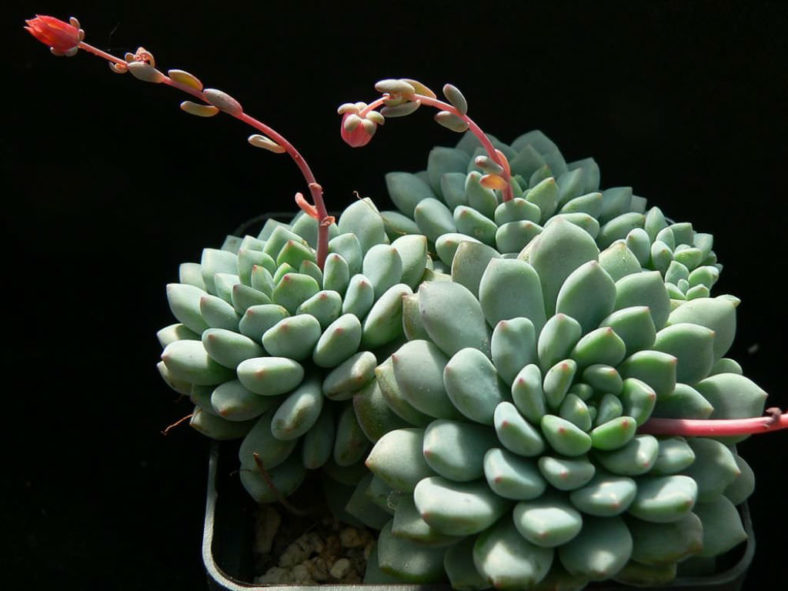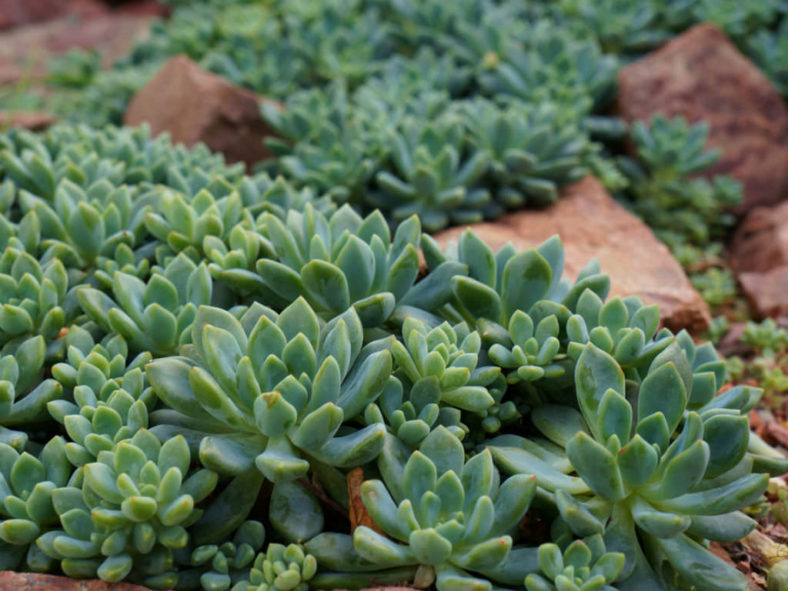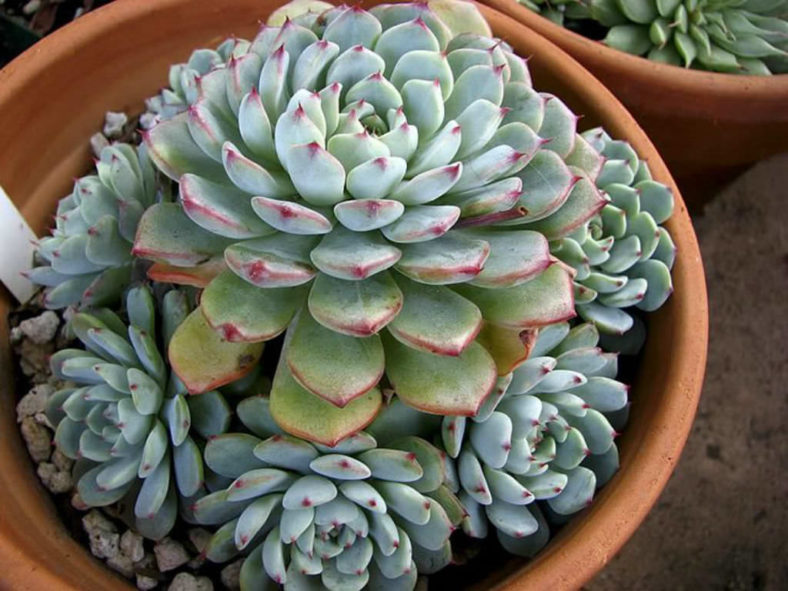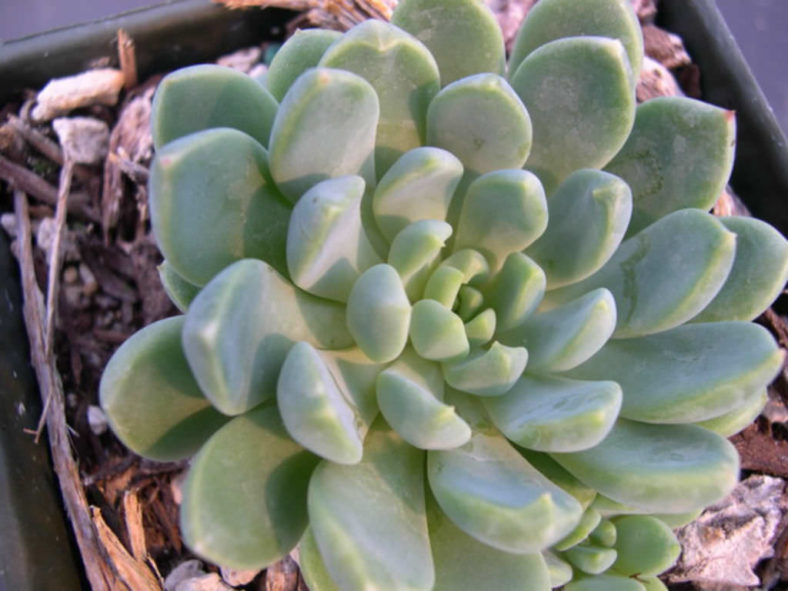Scientific Name
Echeveria amoena De Smet ex E.Morren
Common Name(s)
Baby Echeveria
Synonym(s)
Echeveria pusilla, Sedum amoena
Scientific Classification
Family: Crassulaceae
Subfamily: Sempervivoideae
Tribe: Sedeae
Genus: Echeveria
Etymology
The specific epithet "amoena" (pronounced "am-oh-EN-uh") means "lovely, delightful, beautiful" and refers to the pleasing appearance of this species.
Origin
Echeveria amoena is native to Mexico (Morelos, Puebla, and Veracruz).
Description
Echeveria amoena is a small succulent that forms dense rosettes of glaucous-green leaves, often with pinkish or reddish hues. The rosettes can reach a diameter of 2 inches (5 cm) and produce numerous offsets, forming a dense clump over time. The leaves are thick, fleshy, and pointed, measuring up to 0.8 inches (2 cm) long and 0.3 inches (0.8 cm) wide.
The bell-shaped, coral-red flowers can reach up to 0.4 inches (1 cm) in length and 0.15 inches (0.4 cm) in diameter and appear on red, arching stalks in late spring.

Hybrids of Echeveria amoena
How to Grow and Care for Echeveria amoena
Hardiness: USDA hardiness zones 9b to 11b: from 25°F (-3.9°C) to 50°F (10°C).
Most common Echeveria species are not complicated succulents to grow, provided you follow a few basic rules. First, be careful never to let water sit in the rosette, as it can cause rot or fungal diseases that will kill the plant. Additionally, remove dead leaves from the bottom of the plant as it grows. These dead leaves provide a haven for pests, and Echeverias are susceptible to mealybugs. As with all succulents, careful watering habits and plenty of light will help ensure success.
Repot as needed, preferably during the warm season. To repot a succulent, ensure the soil is dry before repotting, then gently remove the pot. Knock away the old soil from the roots, removing any rotted or dead roots. Treat any cuts with a fungicide.
Most Echeverias can be easily propagated from leaf cuttings, although some are better propagated from seeds or stem cuttings. To propagate a leaf cutting, place the individual leaf in potting soil for succulents and cover the dish until the new plant sprouts.
Learn more at How to Grow and Care for Echeveria.
Links
- Back to genus Echeveria
- Succupedia: Browse succulents by Scientific Name, Common Name, Genus, Family, USDA Hardiness Zone, Origin, or cacti by Genus
Photo Gallery
Click on a photo to see a larger version.


